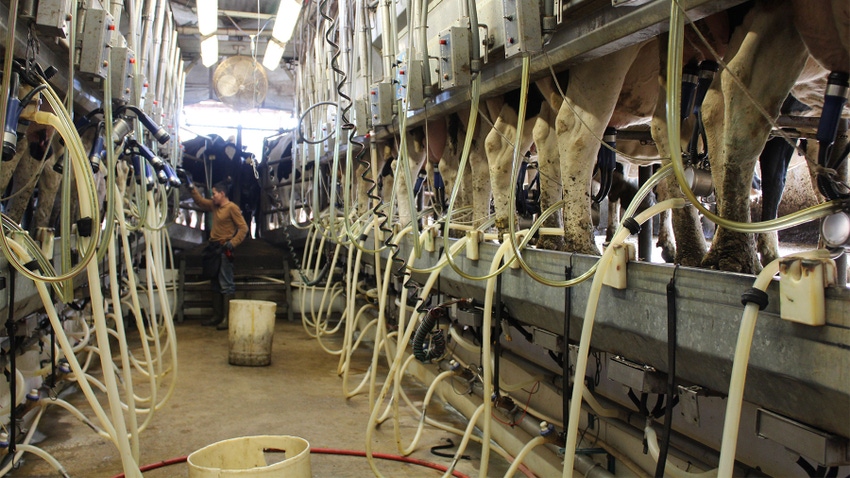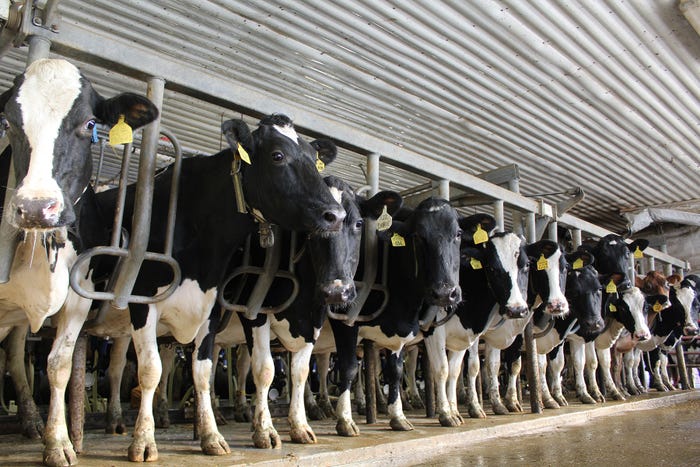
The success of the Miller Farm pilot program is something Ed Maltby, executive director of the Northeast Organic Dairy Producers Alliance, wants to see emulated in New England and other parts of the East.
Why? Because organic dairies in the region are struggling. According to the Vermont Agency of Agriculture, Food and Markets, the number of organic dairy farms in the state has decreased from more than 200 in 2016 to 123 farms in the third quarter of 2023.
In 2021, Horizon Organic announced it was no longer serving farms in New England and parts of New York, leaving 89 producers to find new homes for their milk. At the time Horizon, which is owned by Danone and is now up for sale, cited operational and transportation challenges for dropping the farmers.
About 50 farms were picked up by Organic Valley/Cropp, while others were picked up by Upstate Niagara Cooperative in New York, Stonyfield Lactalis and others.
Some farms went back to conventional dairying. Others exited the business entirely.
Margins are tight. A 2022 survey of 19 organic dairy farms by Northeast Organic Farming Association of Vermont showed an average pay price of $33.27 per cwt, but expenses at $40.14 per cwt equivalent. Operator profit margin was down 10% from the previous year.
While New York state has the most organic dairy farms in the country at 516, according to a 2021 USDA organic survey — and Pennsylvania is in the top five with 357 organic dairy farms — most milk production is concentrated in the West.
California, for example, has 99 organic dairy farms but more than 52,000 head of cows. Texas has only 15 dairy farms but more than 51,000 head of cows. Both states have more cows than New York.
Other states such as Colorado and Oregon also have just a few farms but a much bigger concentration of cows.
This concentration of large, high-production farms coupled with advancements in milk packaging such as ultra-high temperature and extended shelf life, which enables milk to stay in the dairy case for much longer, puts smaller organic dairies in the East at a disadvantage, Maltby says.
“The bottom line is that you no longer need a milkshed, or supply, near the consumer,” he says. “It’s now actually more cost-effective for big retail store brand milk to come from Colorado in packages shipped across the country.”

THE SOURCE: Miller Farm milks 200 registered Holsteins in Vernon, Vt.
His organization is one of several that supports the recently introduced “O Dairy Act of 2023,” which would fund programs, such as the Miller Farm pilot, and boost infrastructure investments, research and innovation in the organic dairy sector.
It would also do the following:
Extend Emergency Assistance for Livestock, Honeybees, and Farm-raised Fish (ELAP) to organic dairy farmers facing losses because of factors such as organic feed shortages and increased input costs that result in a net income decrease of more than 10% in a given year.
Mandate improved data collection for organic dairy, including cost-of-production data for organic milk, feedstuff prices and other production-related costs.
Establish the "Organic All Milk Price Survey" to collect and report data about organic milk prices.
Require USDA to publish periodic reports for organic milk, equivalent to data reported for conventionally produced milk.
Direct USDA to develop and submit a report to Congress with recommendations for implementing an organic dairy safety net program.
“It really just lays out a lot of the requests we’ve been making throughout the years … and to keep it in the eye of the legislative bodies when they’re doing the farm bill and, of course, when they are doing appropriations,” Maltby says. “It's got support from farmers across the country.”
Lack of data means there is no way to benchmark prices to improve the viability of dairies in the region, he says.
Improved data could also shed light on what milk is coming into the region. For example, an October report by Federal Milk Marketing Order 1 showed 18.1 million pounds of organic whole milk and 15.4 million pounds of reduced fat organic milk used by plants in the Northeast.
But the same report also showed 22% of milk used in the region’s milk plants coming from outside the federal order — although there is no way of knowing what percentage is organic or conventional, or where it comes from.
Maltby says having that data will show the potential for any new processor looking to come into the market and will be good for consumers to show what milk comes from where.
"We have gained some traction with the USDA in showing necessity for these figures,” he says. "Having more data will hopefully encourage more competition.”
Lilian Hawkins, policy director at Organic Farmers Association, says that improving data collection is getting the attention of some D.C. lawmakers. This is especially important, she says, for the government to establish an organic dairy safety net program similar to the Dairy Margin Coverage program that already exists.
“Without good data on organic dairy, we can’t exactly say what a good organic safety net program would be,” she says.
About the Author(s)
You May Also Like






